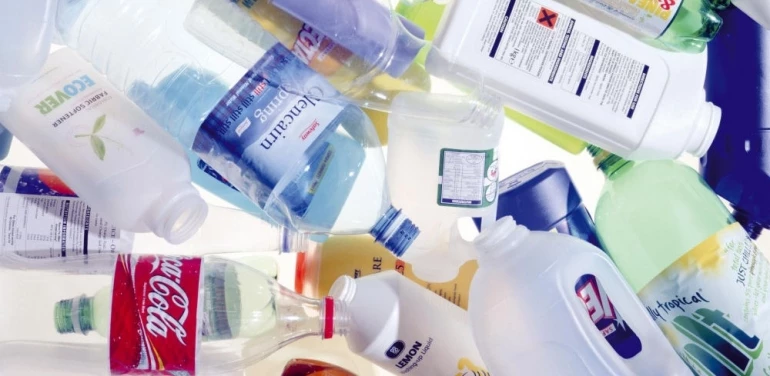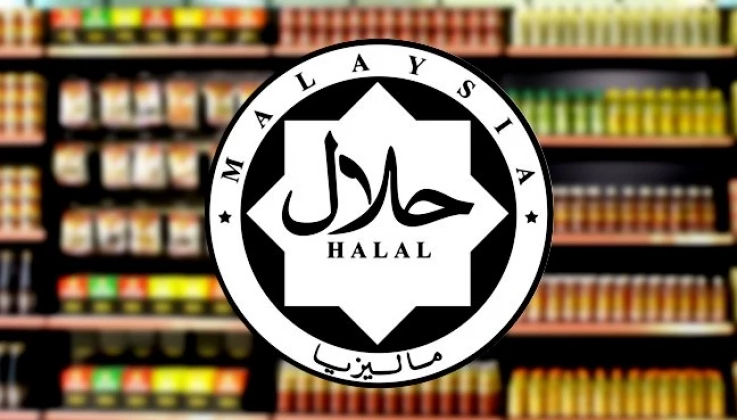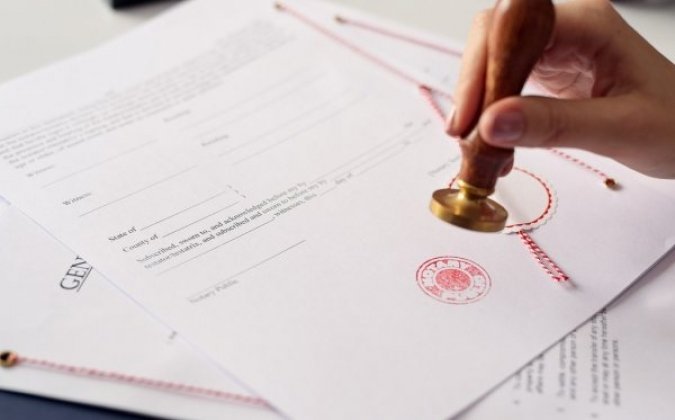Did you know that certified products are 65% more likely to gain consumer trust compared to non-certified alternatives?
Product certification is a vital gateway for businesses to enter new markets, especially in regions like Azerbaijan with strict regulatory standards. Businesses face many challenges while handling certification requirements.
Product recalls affect thousands of items worldwide each year. These recalls cost businesses billions in losses and put consumers at risk. The numbers highlight why product certification has become a significant part of modern manufacturing and commerce. The complex world of product certification presents challenges, yet it remains vital to ensure product safety and market access.
Product certification is a step-by-step process that checks if products meet specific safety, quality, and performance standards. Our team at CERTUS LLC has seen certification become a vital part of business growth, especially for companies looking to break into Azerbaijan's expanding economy.
Our journey into product certification starts with its core elements. Years of work with manufacturers and certification bodies shows that learning these basics will lead to successful product development and market access.
CERTUS LLC has seen first-hand how product certification shapes market access in Azerbaijan's evolving business world. The foundations of efficient economic systems rest on trust in cross-border business deals that drive investment and help policies work better.
Product certification verifies that a product meets specific standards, regulations, or technical requirements. This critical process provides formal documentation to confirm a product's compliance with established safety and quality standards. Recent surveys show almost 90% of consumers want manufacturer claims to be independently verified. This fact highlights why third-party certification matters. We see this play out in Azerbaijan's purchasing patterns, where certified products sell better than non-certified ones. A newer study shows that 85% of consumers trust independent, third-party certification organizations to verify product claims.
Manufacturers can choose from several distinct certification systems:
· Type 1a/1b Systems: Single batch or limited production certification
· Type 2 Systems: Regular market sampling
· Type 3/4 Systems: Factory testing and surveillance
· Type 4 Systems: Combined production assessment and market surveillance
· Type 6 Systems: Services and processes certification
Type 5 system stands out as the most popular approach. It combines complete assessment methods that include market sampling, factory testing, production evaluation, and management system audits.
Multiple stakeholders play vital roles in the certification process:
· Manufacturers Create products and maintain quality standards
· Certification Bodies Conduct assessments and issue certificates
· Regulatory Authorities Set technical regulations and enforcement
· Testing Laboratories Perform product testing and evaluation
· End Users/Consumers Benefit from certified product assurance
National standards bodies (NSBs) serve as primary certification providers in low- and middle-income economies. Private sector certification bodies become more prominent as markets mature. This rise will give a reliable certification ecosystem that maintains high standards while adapting to market needs.
Successful certification depends on manufacturers' ability to maintain detailed documentation. Test reports, technical files, and quality management system records need proper maintenance. A complete documentation system proves ongoing compliance with relevant standards and regulations.
Product certification standards vary substantially across regions and industries in today's global marketplace. These standards coordinate to create a solid framework that ensures product safety and compliance.
ISO and IEC stand as the main international standards bodies that form the groundwork for global product certification. The International Organization for Standardization (ISO) has created thousands of standards to maintain consistent quality across borders. Manufacturers consider ISO 9001 for quality management and ISO 14001 for environmental management among the most vital certifications.
Different industries need specialized certifications based on their unique risks and requirements. Several sector-specific standards apply:
· Electronic Equipment: Must meet electromagnetic interference standards
· Medical Devices: Require stringent safety and performance testing
· Food Products: Need specific safety certifications
Product requirements can substantially affect trade costs because compliance with different market requirements becomes expensive for traders. EU trade agreements help solve this challenge by coordinating technical rules and building collaboration between testing, certification, and accreditation bodies on both sides.
Certification bodies must earn ISO/IEC 17065 accreditation to demonstrate their competence in certifying products, processes, and services. This accreditation maintains high standards and consistency among certification bodies worldwide.
Technical barriers to trade often stem from different technical regulations and conformity assessment procedures in various markets. Accreditation helps reduce costs and reassessment times as products move between markets.
CERTUS LLC's experience shows that companies with proper certification face fewer trade barriers and achieve uninterrupted cross-border trades. This becomes vital in Azerbaijan's market where products must meet specific technical regulations before market placement.
Certification's effect on market access goes beyond simple compliance. We've watched accredited certification create new export opportunities for domestic industries. It boosts industrial growth and promotes transparency. Companies looking to enter Azerbaijan's market must understand these requirements to succeed.
According to Azerbaijan practice, the assessment of conformity with the requirements of technical regulations is carried out by conformity assessment bodies accredited in accordance with the Law of the Republic of Azerbaijan "On Accreditation in the Field of Conformity Assessment," taking into account the requirements of this Law.
Conformity assessment of the requirements of technical regulations is ensured through the following methods:
· certification;
· preparation of a declaration of conformity.
Only high-risk goods are subject to mandatory certification. The certification of high-risk goods is carried out based on the application of the economic entity to the accredited conformity assessment body of their choice, and a certificate of conformity is issued based on positive certification results.
The conformity assessment of medium- and low-risk goods involves the preparation of a declaration of conformity for the goods by the economic entity in accordance with this Law. In addition to the preparation of a declaration of conformity for medium-risk goods, it is mandatory to engage a conformity assessment body to confirm conformity. In such cases, the document issued by the conformity assessment body is appended as a supporting document to the declaration of conformity prepared by the economic entity.
The forms, preparation, and submission procedures for the certificate of conformity and the declaration of conformity are determined by the body (institution) designated by the relevant executive authority. On the day of preparation, information about the declaration of conformity must be entered into the electronic registry created by the body (institution) designated by the relevant executive authority.
The conformity assessment body must be a third party independent of the economic entity to which the goods, related processes, and production methods belong.
The responsible officials and other employees of the conformity assessment body performing conformity assessment tasks cannot be the designers, manufacturers, suppliers, installers, repairers, or commercial representatives (agents) of the goods being assessed.
During the implementation of conformity assessment procedures, the following must be ensured:
· Equal opportunities for local and foreign manufacturers in carrying out conformity assessment in the production area of the goods and obtaining conformity documents;
· Providing the client with information about the time frame for each conformity assessment procedure;
· To the extent possible, performing conformity assessment even if deficiencies identified in the application do not affect conformity assessment;
· Ensuring the confidentiality of information obtained about the goods during conformity assessment procedures that requires protection;
· Equal fees for conformity assessment for similar local or foreign-origin goods (excluding additional costs arising from the location of conformity assessment);
· Limiting information requirements to only the data necessary for determining conformity and related payments;
· Conducting site inspections and sampling for conformity assessment without creating unnecessary obstacles to the activities of the economic entity;
· When the operational characteristics of the goods, related processes, and production methods are changed after conformity assessment, limiting conformity assessment to operations verifying compliance with relevant technical regulations.
Conformity assessment bodies must inform the body (institution) designated by the relevant executive authority on the same day regarding the results of each conformity assessment activity, as well as the suspension or cancellation of the certificate of conformity.
The registry of conformity certificates and declarations of conformity is maintained by the body (institution) designated by the relevant executive authority in the manner specified by the same body.
Conformity documents issued abroad regarding compliance with the requirements of technical regulations are recognized in the manner determined by the body (institution) designated by the relevant executive authority, provided their authenticity and compliance with international agreements to which the Republic of Azerbaijan is a party are verified.
Except for cases where direct recognition is provided in international agreements to which the Republic of Azerbaijan is a party, the manufacturer, importer, or trade representative must submit conformity documents to an accredited conformity assessment body before the importation of goods for the recognition of foreign-origin conformity documents. The accredited conformity assessment body must decide on the recognition or rejection of the submitted conformity documents under the relevant Law, forward recognized conformity documents to the registry maintained by the body designated by the relevant executive authority, and inform the manufacturer of the results.
If foreign-origin conformity documents are not recognized or such documents are unavailable, the manufacturer or trade representative must ensure the conformity assessment of such goods with the applicable national technical regulations before their importation.
If conformity of goods is ensured through the methods specified in the technical regulations, the economic entity must affix a conformity mark to the goods to confirm conformity. The form, use, and issuance procedures for the conformity mark are determined by the body designated by the relevant executive authority.
A conformity mark cannot be affixed to goods that have not undergone conformity assessment as required by the technical regulations.
Here are the steps we take in our product certification process to make sure products meet safety and compliance requirements.
Initial Application and Documentation
Documentation forms the foundation of our process. Federal law makes manufacturers and importers test many consumer products to comply with safety requirements. A well-prepared documentation package gives you the best chance at certification success.
Testing and Assesment
Our testing phase includes comprehensive evaluations that check if products meet safety and code requirements. We select and examine representative products based on specific criteria. Testing happens in two ways:
· In accredited laboratory facilities
· On-site testing for large equipment or special cases
Children's products need testing from a CPSC-accepted laboratory. We maintain strict testing protocols because product safety has a direct effect on consumer well-being.
Certification Decision and Issuance
The decision-making process takes 1-2 months after assessment. Our certification process has three vital stages:
1. Contract Review: We review the scope of activity and proposed assessment team
2. Provisional Decision: We check if the assessment meets all requirements
3. Final Decision: We issue certification after resolving all non-conformities
We make about 2,000 decisions each year. About 15% need extra information from the assessment team. Approved certifications get updated in our records within 24-48 hours.
Manufacturers must maintain proper testing and control systems at their production site. Random surveillance testing of certified products from production happens regularly. This ensures products continue to meet applicable standards.
Reliable product certification depends on our assessment methods. We take an integrated approach that combines strict lab testing, systematic sampling, and a detailed quality management system evaluation.
The certification process recognizes three distinct types of laboratory testing:
Testing Type Purpose Application Type-examination Basic inspection of product sample Non-program critical items Independent type-testing Rigorous testing with site inspection Program-critical products Full quality assurance Complete production site evaluation Complex program-critical products The laboratory selection process requires accreditation that meets IEC 17025 standards to give competence in testing and calibration. Each laboratory seeking accreditation must show specific competencies in testing protocols for their chosen product categories.
Product characteristics determine our systematic sampling methods. Liquid products need sampling at three critical levels:
· Upper level sampling
· Middle level sampling
· Lower level sampling
Solid materials need a more detailed approach. The sampling process takes incremental samples at different stages:
· Start of discharge
· Middle of process
· End of discharge
Samples must be properly homogenized before testing to get accurate results. Automatic samplers handle bulk products at regular handling locations.
The quality management system evaluation looks at two significant aspects:
The manufacturer's internal controls come first. This evaluation covers:
· Incoming materials control
· Process controls on manufacturing
· Management controls for variance reduction
Periodic testing requirements follow. Children's products must undergo mandatory testing, while general use products benefit from voluntary periodic testing to maintain quality standards. The evaluation process shows that companies need detailed records of:
· Technical documentation
· Certification maintenance records
· Compliance documentation systems
Products need retesting after any material change that could affect compliance with safety rules. This proactive approach prevents non-conformities and maintains consistent product quality based on our experience.
Safety and quality parameters are the life-blood of our product certification process. We have created detailed frameworks that will give a high level of assurance about meeting regulatory requirements and consumer expectations.
Our certification practice requires manufacturers to certify in writing that their products comply with applicable consumer product safety rules. Safety requirements change based on product type and intended use. We implement reasonable testing programs for general use products to provide manufacturers with high assurance about their product's compliance.
We review multiple aspects of product quality and safety through performance testing. Our testing criteria includes handling, durability, functionality, workmanship, and instructions for use in electrical and electronic products. Our state-of-the-art laboratories help us review products against national and international standards.
Our performance review focuses on:
· Mechanical stress resistance
· Environmental condition tolerance
· Functional reliability
· Quality consistency
The Product Safety Risk Assessment Methodology (PRISM) helps us conduct detailed risk evaluation. We look at both the severity of potential harm and its probability of occurrence in our risk assessment process. Our team thinks about various factors like product prevalence and public concern during risk assessments.
Children's products need periodic testing by CPSC-accepted laboratories. This requirement helps ensure ongoing compliance and safety. Additional testing becomes necessary when manufacturers make material changes to their products to verify continued compliance with safety standards.
Product safety standards play a vital role in international trade agreements and regulations. These standards help manufacturers build trust in their brands and avoid legal liabilities from unsafe products. We keep track of changes in safety requirements and update our assessment criteria.
Risk assessments combine to calculate new probability levels for products with multiple hazards. This approach helps us capture all potential safety concerns. We maintain detailed technical files, certification maintenance records, and compliance documentation systems to create a clear audit trail of safety verification.
Good documentation is the foundation of successful product certification. Our records show that detailed record-keeping plays a vital role. It proves ongoing compliance and ensures smooth certification processes.
Manufacturers need to keep several types of records in our certification process:
· Production process parameters and product traceability documentation
· Quality control records for purchased products
· Calibration and verification documentation
· Records of non-conforming products and corrective actions
Our record retention rules are strict. Manufacturers must keep certification test records for each manufacturing site that makes children's products. Each periodic test needs separate certification records. This includes production testing plans and results.
Manual processes have given way to detailed document management systems. Our latest survey reveals an even split between manual management and automated assistance services.
These elements are essential to manage compliance documentation:
1. Documents organized logically
2. Regular document reviews and updates
3. Clear access control protocols
4. Secure storage systems
Digital tools help maintain document integrity. Our data reveals that one-third of organizations use document management software. One-fifth have adopted detailed document management systems.
Importers must verify that products arrive with proper documentation. They need to keep copies for 10 years. EU declarations of conformity need translation into every official language where products sell.
Documentation does more than prove compliance. It protects organizational integrity and supports continuous monitoring. Quick responses to regulatory changes become possible. Technical documentation must detail product design, manufacture, and operation. This ensures complete traceability and accountability throughout certification.
Organizations need to understand the financial side of product certification to plan their budgets well. Our analysis of certification costs and timelines in industries of all sizes gives you a clear picture of what you can expect.
Our 15 years of certification experience shows that product certification costs range from AZN 200 to AZN 5000. This wide range reflects how complex different certification procedures can be.
Product complexity and certification type determine how long certification takes. Standard electrical devices take 2-3 days. More complex products need extra evaluation time:
· Simple Products: 3-6 weeks total duration
· Complex Products (medical, hazardous): Additional 4-8 weeks
· Radio-based Equipment: Extended testing period required
Certification bodies allow 90% of cases to self-certify, which cuts down time and costs substantially. Third-party certification needs at least three months of planning.
Here are proven ways to optimize certification costs while keeping quality standards high:
1. Use Existing Certifications
· Apply supplier test results and certifications
· Combine multiple certification requirements into single testing programs
2. Internal Resource Optimization
· Build in-house testing capabilities where possible
· Train staff for self-certification procedures
· Keep detailed documentation to speed up assessment
3. Strategic Planning
· Time certifications with product development cycles
· Certify multiple products together when possible
· Schedule regular assessments to keep certification valid
Quality should never take a back seat to cost savings. Evidence shows that reputable certification bodies offer better long-term value, despite higher upfront costs. Complex products need wear and tear tests that take up to one month.
The certification body's accreditation status and testing capabilities matter most. Laboratory time, testing procedures, and consultant work drive certification costs. A full conformity assessment, risk analysis, and documentation usually takes at least one full day.
Our certification framework helps you identify which directives and standards apply to your products. This streamlines the certification process. Good planning and preparation reduce costs and certification times while ensuring compliance with requirements.
Product certification maintenance needs constant alertness and systematic monitoring. We created complete strategies to help manufacturers keep their certification status and ensure consistent product quality and safety.
Our experience shows that manufacturers should conduct periodic testing often enough to stay confident about their product's compliance. Key factors to think about are:
· Test result variability
· Manufacturing process changes
· Component part modifications
· Potential safety risks
Clear guidelines exist for product recertification needs. A material change happens when manufacturers modify their products through physical or digital means not planned in the original certification. Recertification becomes necessary when:
· Safety-related modifications create new hazards
· Changes affect existing risk levels
· Product modifications need additional protective measures
· Component suppliers or materials change by a lot
Children's products need retesting when material changes occur, even in short production runs. Our certification process shows that failing to get proper recertification can create market barriers and increase risks.
Surveillance audits verify ongoing compliance with certification requirements. High-risk supply chains typically need audits six months after the original certification. These audits look at:
1. Traceability Requirements
· Verification of delivery documents
· Mass balance assessments
· Supply chain documentation
2. Quality Management
· Process reliability evaluation
· Non-conformance monitoring
· Corrective action verification
Annual surveillance assessments review products, processes, quality management systems, and changes since previous audits. Regular assessment keeps processes reliable and helps avoid pricey product recalls.
Supply chains that handle both waste materials and virgin products need extra surveillance audits three months after the original certification. This surveillance framework reduces risks and costs tied to product non-compliance.
Proper documentation during surveillance periods plays a crucial role. Required records include:
· Periodic test plans
· Test results for five years
· Production testing documentation
· Compliance verification data
Manufacturers using a production testing plan can test at two-year intervals if they keep complete written documentation of their quality assurance processes. Our ISO/IEC 17025-accredited laboratory option gives qualified organizations a three-year testing interval.
The maintenance requirements we created are practical yet thorough. Manufacturers who show consistent compliance through their quality management systems might get adjusted surveillance frequencies. But we keep strict oversight of high-risk products and processes to ensure consumer safety and regulatory compliance.
Success in certification maintenance depends on proactive monitoring and quick responses to changes. We partner with manufacturers to help them understand and meet all periodic assessment requirements. This approach helps them maintain certification while optimizing costs and resources.
Product certification is vital to modern manufacturing and commerce. Our detailed exploration shows how proper certification protects consumers. It helps achieve regulatory compliance and creates worldwide market access opportunities.
This piece covers everything in product certification:
· Basic certification types and roles of stakeholders
· Standards that apply in regions and industries worldwide
· Certification processes and testing needs step by step
· Systems for documentation and record keeping
· Planning costs and timelines
· Requirements for maintenance and surveillance
Success in product certification needs good preparation, proper documentation, and steady quality management. Companies that make certification standards a priority face fewer liability risks. They also gain better market credibility and customer trust.
Certification has boosted brand image and market success in Azerbaijan by a lot. 78% of consumers indicated they are willing to pay a premium for products with certification. This shows the real value certification brings to brands.
CERTUS LLC's experience shows that smart advertising with certification marks gives businesses a clear edge over competitors. Trust plays a crucial role here, as 63% of consumers agree that while a good reputation may get them to try a product, they will stop buying it unless they trust the company behind it.
Consumer confidence matters most in Azerbaijan's market. We've built a flexible system that connects manufacturers and consumers through certification. Our programs help businesses stay viable by using environmentally responsible practices, worker safety measures, and quality controls.
New technology and regulations keep changing product certification. Manufacturers should stay up to date with certification standards. They need strong quality management systems too. This forward-thinking approach helps maintain compliance. It also keeps certification costs and timelines on track.




























